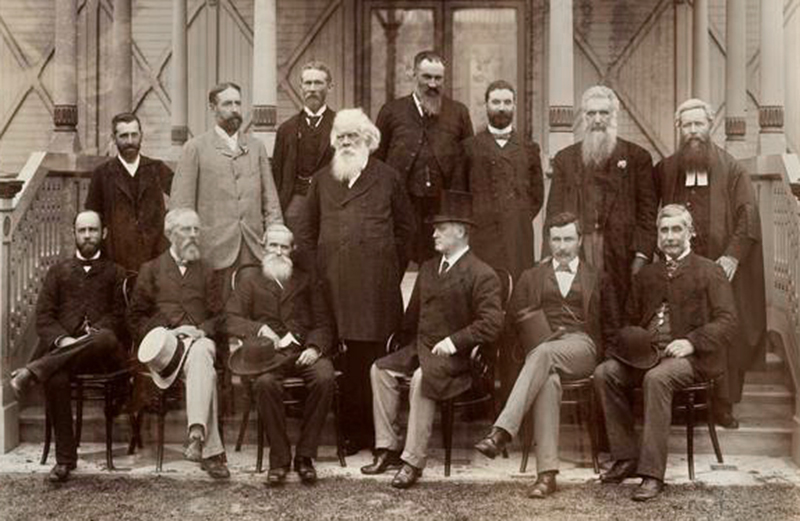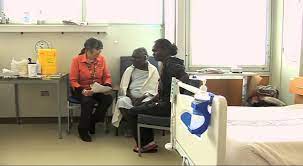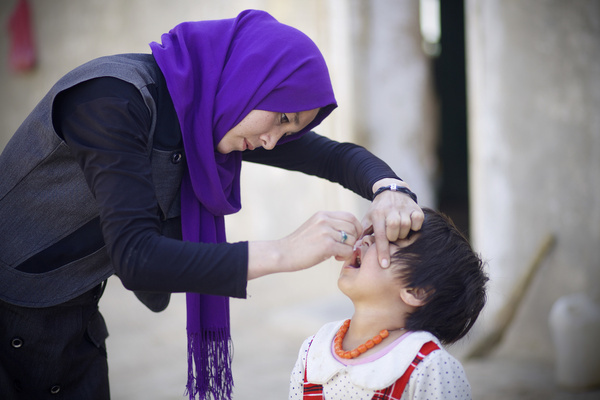
If enough of us get vaccinated to move beyond the immediate emergency, it will be useful to reflect on the medium-term implications of the global pandemic for the governance of Australia and the world. As well as the gloom and uncertainty, there have already been just a few welcome developments and there will be more to unearth.
PART 3: Some better news
National Cabinet
One of the most positive developments in governance to have emerged during the pandemic was a National Cabinet. This worked well for some time and showed the value of close collaboration between all governments on issues of urgency and national significance. It was so successful that, for a while, it no doubt increased the public’s respect for government and politics – albeit from a very low base.

Questions have already been asked about whether the partial success of this National Cabinet suggests ways in which inter-governmental work (including meetings about Federal fiscal relations) can be undertaken in a manner that improves on the Council of Australian Governments (COAG) model.
That is not to say that the National Cabinet for Covid was devoid of politics. During the period when it was cohesive and decisive, the Federal Government was not averse to taking advantage of the (politically desirable) position of backing the options that were most popular, knowing that, in fact, decisions on these matters were not within their compass. This was the case with lockdowns in general, and with parts of lockdowns such as school closure, masks and inter-State travel.
With schools, for example, for some time the Prime Minister was able to argue the critical value of schooling, the difficulties with home schooling, and to express the general belief that, for these reasons, schools should remain open. All the while, decisions on the matter lay with the States and Territories.
The National Cabinet was faced with the challenge of balancing health (as measured by cases, hospitalisations and deaths) against the economic and social effects of lockdowns. To date it has been unwise or unpopular to be too explicit about this balance. All governments, at least as far as public commitments have been concerned, have leaned towards suppressing the virus as a prerequisite for economic recovery.
Of the decisions made by the National Cabinet, none was more important than the one relating to quarantine. International quarantine is a Federal responsibility but decisions on internal borders lie with the States and Territories. Tasmania locked its borders on 19 March 2020. Australia’s national borders were closed the following day and on 24 March Australians were prohibited from leaving the country.
Thus it was that a complex, layered Commonwealth-State system emerged in relation to quarantine. The Federal Government took the decision to require all overseas arrivals to quarantine for 14 days. And through National Cabinet the States and Territories agreed to run hotel quarantine as part of their responsibility for public health. They also agreed to fund most of it.
This turned out to be a massive false economy for the Commonwealth. The fact that there has been no national system or standardised procedures for hotel quarantine has been one of the causes of the leakages from the hotels involved. These have resulted in huge financial commitments from the Commonwealth to support the economies affected by lockdowns determined and managed by the States and Territories.

For any kind of National Cabinet arrangement to persist will require leadership from the Commonwealth. And the situation in which one level of government makes lockdown decisions with another picking up the bulk of the economic costs that result looks like an unlikely bargain.
Decisions are ‘evidence based’
One of the phrases we have heard most often during the pandemic is when governments, federal and state, have attributed a decision to “the best possible advice from the health experts”.
It is surely a positive development for policy decisions to be made on the basis of scientific and other real evidence. Some parts of the world have had their fill of ‘alternative facts’.
The thought that occurs is what other issues have the same characteristics as a viral pandemic and, also, are accompanied by the same volume of applicable science. Climate change is one obvious case. And perhaps the challenge of improving the health and well-being of Australia’s Aboriginal and Torres Strait Islander people is another.
The considerations of the Chief Medical Officers have enabled governments to say, in effect, “Don’t blame or credit us governments; we are simply following independent, world’s best scientific advice.” In turn, the Chief Medical Officers have been guided by modelling of COVID-19 transmission and infection dynamics. It is perhaps surprising to note that the only three pieces I posted in the early days of the pandemic (April 2020) focused on modelling and a re-reading of them shows very little that needs to be revised or regretted. An extract from the post of 10 April 2020 is at the end of this piece.
It could be argued that governments’ constant deferral to scientific advice is a kind of delegation of responsibility and avoidance of accountability. It is politically attractive to have someone to blame for difficult decisions or to blame if decisions taken were the wrong ones. But one cannot argue against the idea that all policy decisions should be determined on the basis of evidence from science.
The fact that the distribution of money for sports grants and suburban car parks has not been based on evidence is one of the reasons why there is such a lack of respect for and trust in governments and politics.

Institutional flexibility
The good things to have come out of the pandemic include an extra measure of flexibility in certain policy and regulatory matters.
Consider, for example, the supply of oxygen. The Australian New Zealand Industrial Gas Association is the peak body for suppliers of medical oxygen to hospitals and similar facilities. Because of the public benefits that would result, the Australian Competition and Consumer Commission (ACCC) has granted ANZIGA temporary authorisation to exchange information and work through arrangements which in other circumstances might be deemed to reduce competition in the sector.

Another positive spin-off from the pandemic has been the extension of publicly-funded telehealth services. When I was at the National Rural Health Alliance we battled persistently to achieve small steps forward on telehealth, one at a time, painfully and slowly! Over time there were extensions to the geographic areas in which funded telehealth was available; eligibility for additional health care settings, for additional professionals (eg specialist to GP link-ups), and for additional interventions (eg for mental health).
Rural people and their advocates were no doubt delighted when, for the pandemic, there were major extensions made in one fell swoop to telehealth services under Medicare. Some 300 additional items became eligible. Over 30 million services were claimed in the first six months at a cost of over $1.5 billion.

There will need to be evaluations. When they are done, telehealth and other things such as e-prescriptions and home delivery of medications should be evaluated as initiatives that make access to service more equitable, not only for what they do to facilitate social distancing or contactless care.
In the face of the pandemic, governments in other countries have granted pharmacists greater authority. In Canada, for example, pharmacists have been given opportunities to join actively in the fight against the virus. Aimed at assisting an overloaded health system, the extensions for pharmacy practice in that country have included performing COVID-19, influenza, and Group A Streptococcus screening tests, and vaccine administration.
In Australia, due almost certainly to the vexed political situation relating to medicine v. pharmacy, it is still unclear as to where and when pharmacists are involved in Covid vaccinations. In any case the vaccination ‘system’ is already mixed-mode and unclear enough.
It is to be hoped that the passing of the health emergency will not see the end of such sensible increased flexibility of these sorts.
Evaluations can start now
A main course of co-ordinated decision making on national emergencies, with better use of scientific evidence (when available) in making policy decisions, plus a larger serve of sensible flexibility may not seem to be much of a feast. But any trauma and disruption as great as the world is currently facing must yield some opportunities for positive change management as well as misery and uncertainty.
There is a huge range of matters that will need to be evaluated, at global and domestic levels and at every level in between. And it will include positive changes which may not yet be even contemplated.

Evaluation will be useful. And some of those qualified in the field should start soon.
————————————————————-
From the post to this blogg of 10 April 2020:
Modelling the transmission of infectious disease
Mathematical models of disease transmission can be used to estimate the potential impact of public health responses to infectious diseases. Recently (7 April) some details of the particular model that is being used as the basis for the decisions of Australian governments on the COVID-19 crisis have been published.
How do such models work? How can we be sure they are accurate? What do they tell us?

The headline findings from the modelling are the ones that have been delivered to us consistently in governments’ media conferences and other information activities:
“An uncontrolled COVID-19 epidemic would result in a situation dramatically exceeding the capacity of the Australian health system over a prolonged period, notwithstanding the increases in that capacity that are possible.”
“A combination of case-targeted isolation measures with general social measures will substantially reduce transmission and result in a more prolonged epidemic with lower peak incidence, fewer overall infections and fewer deaths.”
As we all know, we have to stay home.
How it works
These general prescriptions from the modelling are clear and largely unchallenged. But as time passes it will be good if there is closer scrutiny of this and other modelling. This will result in better understanding of both the general applicability of such modelling and the specific work being done on the Australian government’s preferred model.
The key variables on which mathematical models of infection are based are the latent period (i.e. the interval following exposure before an individual becomes infectious and transmits the disease), the infectious period (i.e. the period during which an infected person can transmit a pathogen to a susceptible host), and transmissibility. Transmissibility is described by the reproduction number – the number of secondary cases generated by a single infected case introduced into a susceptible population.
If the transmissibility number is less than 1, infection is receding. If it’s greater than 1, infection is spreading.
For models of this kind it is useful to know the extent to which outputs (in effect, the model’s predictions) change in response to a given amount of variation in its inputs, and the particular input to which altered outputs can be attributed. The inputs include both the assumptions made about the structure of the entity being modelled and the data fed in.
This is the business of uncertainty and sensitivity analysis. In effect they provide information about the robustness of the model – the probability of the model and its predictions being accurate reflections of reality. The greater the model’s uncertainty or sensitivity, the more its outputs change with a given amount of variation of its inputs – and the less useful it will be.
Such analyses can help check the accuracy of a model’s structure or specification by assessing the individual contribution of a variable and the need to include it or not.
They can also help interpret the results of a model by identifying thresholds for certain variables that trigger outcomes of interest.
The value of any such modelling is limited if the model’s structure is imperfect (that is, if it makes false assumptions about the relationships between elements of the model) or if incomplete or inaccurate data are fed into it. The modelling can be run again and again with greater confidence about its accuracy as, each time, more is known about the characteristics of the pathogen and more local (Australian) data are added in.
Critically, accurate estimation of the transmissibility of a disease requires reliable data on its incidence in the total population. As we have been told time and time again, this requires “testing, testing and testing”.

















